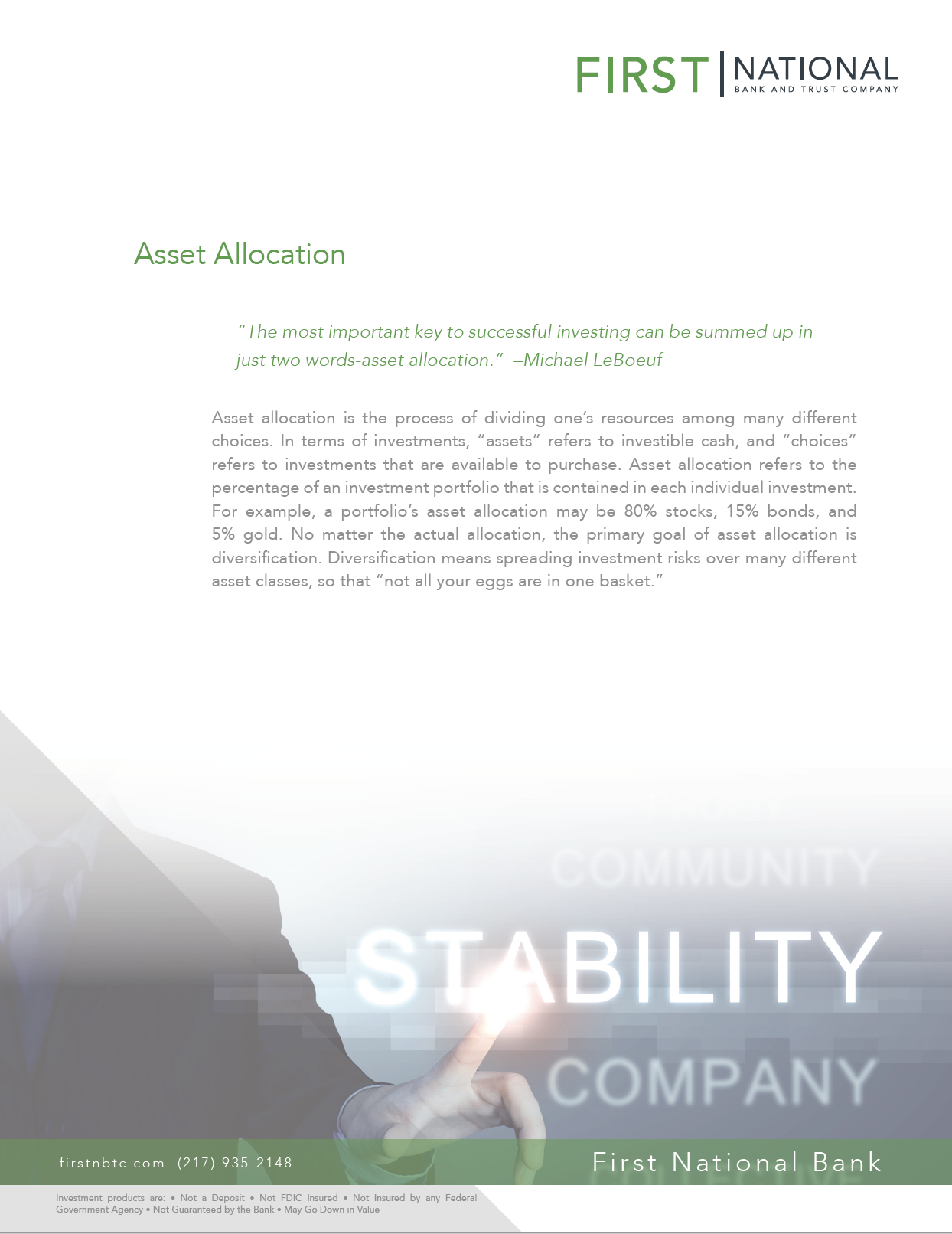Asset allocation is the process of dividing one’s resources among many different choices. In terms of investments, “assets” refers to investible cash, and “choices” refers to investments that are available to purchase. Asset allocation refers to the percentage of an investment portfolio that is contained in each individual investment.
To download our free white paper, fill out the form below!

Return
Return is simply the level of total price growth (or decline) and income expected to be earned over a period of time. There are several methods one can use to arrive at an expected return:
- Historical
- Market-Based
- Custom
Risks
Broadly defined, risk is the probability of realizing a return that is different than the expected return. Traditionally, risk is has been defined as the volatility of returns around the expected return, known as standard deviation.
TS Prosperity Group follows a more narrow definition of risk: realizing a significant loss of investment principal. At the TSPG, “significant” means the average worst-case loss scenario for a given asset class or portfolio.
Diversification
A proper asset allocation is critical to the long-term performance of an investment portfolio by ensuring effective investment diversification. Diversification serves to reduce portfolio risk while maintaining return.
Proper diversification should not be confused with “label diversification.” Label diversification is when investments that appear to be different are actually driven by the same risk factors.

